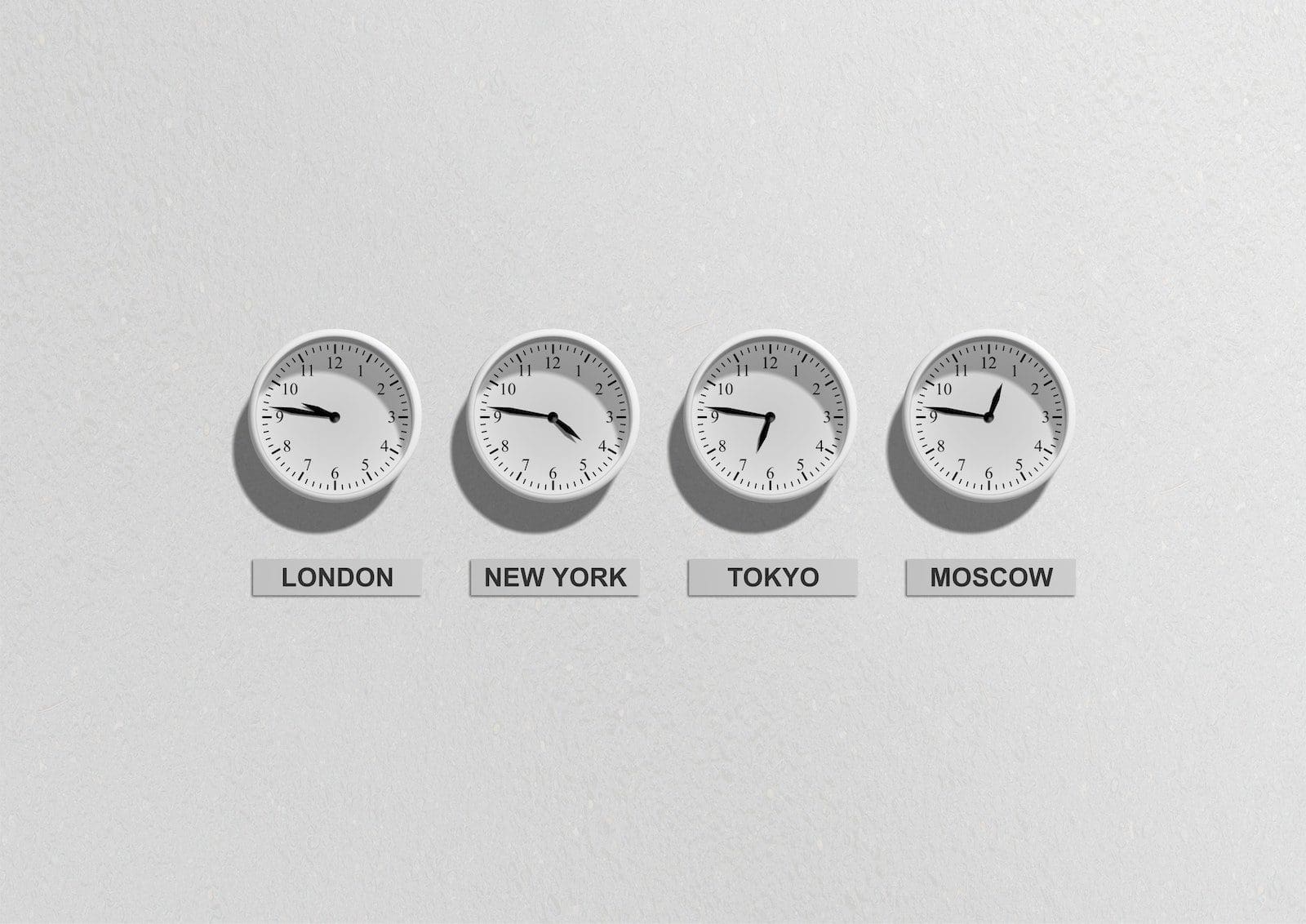Standard time typically refers to the conventional method of measuring time based on the 24-hour clock, where each day is divided into 24 equal hours. On the other hand, normal time often refers to the regular or common understanding of time in everyday life, adhering to societal norms and conventions.
Key Takeaways
- Standard Time is the uniform Time within a specific time zone, established by international agreement and used for legal, commercial, and social purposes.
- Normal Time, also known as solar Time or local mean Time, is the Time based on the position of the sun in the sky, which varies slightly throughout the year due to Earth’s tilted axis and elliptical orbit.
- Standard Time provides a consistent and uniform time measurement within a given time zone, while Normal Time is based on the sun’s position and can vary slightly throughout the year.
Standard Time vs Normal Time
The difference between Standard time and Normal time is that Normal time is when work should be done without any delays. Standard time is the time the worker takes to complete the job with unavoidable delays.

Every industry carries out the process of Work measurement. Work measurement is the process of calculating the time a person would take while performing a task, with respect to different performance levels.
Normal time also called the base time or levelled time, is the time that a trained worker needs to complete the task at an average pace.
Comparison Table
| Feature | Standard Time | Normal Time |
|---|---|---|
| Context | Timekeeping for large regions | Work measurement (industrial engineering) |
| Basis | Divides the Earth into time zones based on longitude for consistent time across a region | Represents the ideal time to complete a task without considering allowances for fatigue, personal needs, etc. |
| Accuracy | Consistent and fixed for a specific time zone | Theoretical and may vary slightly based on individual performance |
| Purpose | Ensures coordinated activities across a wide area | Estimates workload and sets benchmarks for productivity |
| Example | Eastern Standard Time (EST) is UTC-5 | Assembling a toy car might have a normal time of 5 minutes |
What is Standard Time?
Definition of Standard Time
Standard Time is a time standard that is adopted and maintained by governments or international organizations. It provides a consistent measure of time, helping individuals and organizations coordinate activities globally.
Implementation of Standard Time
Time Zones
The Earth is divided into 24 time zones, each representing one hour of time difference from the Greenwich Mean Time (GMT) at the Prime Meridian. This division ensures that time is synchronized across regions, allowing for standardized communication and scheduling.
Daylight Saving Time
Some regions implement Daylight Saving Time (DST) to make better use of daylight during certain periods of the year. This involves adjusting the clocks forward by one hour during the warmer months and reverting to Standard Time during colder months. The aim is to optimize energy usage and provide more daylight in the evenings.
History of Standard Time
Greenwich Mean Time (GMT)
Greenwich Mean Time, established at the Royal Observatory in Greenwich, London, served as the initial reference for Standard Time. It was adopted as the prime meridian in 1884 during the International Meridian Conference, laying the foundation for global time coordination.
Coordinated Universal Time (UTC)
In 1960, Coordinated Universal Time (UTC) replaced GMT as the primary time standard. UTC is based on International Atomic Time (TAI) with leap seconds added to account for irregularities in Earth’s rotation. This ensures that UTC remains within 0.9 seconds of mean solar time.
Importance of Standard Time
Global Communication
Standard Time facilitates global communication, commerce, and transportation by providing a consistent reference point. It allows people around the world to schedule meetings, flights, and other activities with precision.
Scientific and Technological Applications
In scientific and technological fields, precise timekeeping is crucial. Standard Time is fundamental for synchronization in fields such as astronomy, telecommunications, and global navigation systems.

What is Normal Time?
Factors Influencing Normal Time
Several factors influence the determination of normal time:
- Work Content: The actual work involved in completing a task is a primary factor. It includes the physical or mental effort, skills, and expertise required to perform the job.
- Working Conditions: Normal time assumes average working conditions, including a standard level of worker efficiency, tools, and equipment. Deviations from these conditions may impact the time required.
- Operator Skill: The skill level of the worker performing the task is considered. Skilled workers may complete a job more efficiently than those with lower skill levels.
Methods of Calculating Normal Time
There are different methods employed to calculate normal time:
1. Time Study:
- Involves observing and measuring the time taken by a skilled worker to perform a task under normal conditions.
- Uses predetermined motion time systems to break down the task into elemental motions for accurate time measurement.
2. Work Sampling:
- Utilizes random observations of a worker’s activities over a period to estimate the proportion of time spent on specific tasks.
- Provides a statistical approach to determine normal time.
3. Historical Data:
- Relies on past performance data to estimate the time required for a similar task.
- Useful when there is a history of consistent and repetitive work.
Importance of Normal Time
- Resource Planning: Helps organizations allocate resources efficiently by estimating the time required for various tasks.
- Cost Estimation: Aids in budgeting and cost estimation for projects or production processes.
- Performance Measurement: Serves as a benchmark for evaluating worker performance and efficiency.
- Standardization: Contributes to the establishment of standard procedures and methods for consistent and reliable results.
Challenges in Determining Normal Time
- Variability: Different workers may perform the same task at different speeds, leading to variability in normal time.
- Changing Conditions: Normal time calculations may be affected by changes in working conditions, technology, or worker skill levels.
- External Factors: External factors such as interruptions, machine breakdowns, or unexpected events can impact normal time.

Main Differences Between Standard Time and Normal Time
- Definition:
- Standard time refers to the time used within a specific time zone, usually based on the mean solar time for that region.
- Normal time is a more generic term and can refer to any conventional method of measuring time.
- Time Zones:
- Standard time is associated with time zones and is set according to the longitudinal position of a region.
- Normal time may not be tied to specific time zones and can be a more general concept.
- Adjustments:
- Standard time may involve adjustments such as Daylight Saving Time (DST) to make better use of daylight during certain periods.
- Normal time typically does not involve such adjustments and follows a consistent measure of time throughout the year.
- Precision:
- Standard time is often more precise and regulated, especially when considering international standards like Coordinated Universal Time (UTC).
- Normal time may vary in precision and may not adhere to strict international standards.
- Global Consistency:
- Standard time is used globally to facilitate coordination and communication across different regions.
- Normal time may vary based on local conventions and may not provide the same level of global consistency.
- Legal and Official Use:
- Standard time is often the legally recognized and officially adopted time within a country or region.
- Normal time may not have the same legal status and can be more informal in its application.
- Historical Context:
- Standard time has a historical context tied to the development of railways and telecommunication, which required standardized timekeeping.
- Normal time may refer to traditional methods of timekeeping before the widespread adoption of standard time.
- Practical Applications:
- Standard time is commonly used in various fields such as transportation, telecommunications, and international coordination.
- Normal time may be used in more casual or everyday contexts without the need for strict adherence to international standards.

- https://en.m.wikipedia.org/wiki/Standard_time_(manufacturing)
- https://www.wisdomjobs.com/e-university/production-and-operations-manageme

This post provides a comprehensive comparison between Standard Time and Normal Time, very useful for people in the business world.
I agree, it gives a clear understanding of the key differences.
Absolutely, an insightful read for those involved in work management.
I find the distinction between Standard Time and Normal Time to be trivial, as the essential goal is to complete tasks efficiently regardless of these labels.
That’s an interesting perspective, efficiency is indeed the main objective.
While efficiency is crucial, understanding the nuances of time measurement systems can contribute to improved productivity.
The detailed comparison of Standard Time and Normal Time offers valuable knowledge for those involved in work measurement and process optimization.
Absolutely, the post contributes to a deeper understanding of time measurement systems.
The post presents a thorough comparison of Standard Time and Normal Time, providing valuable insights for work management.
Absolutely, the insights into time measurement are beneficial for professionals in the field.
While the formulas and techniques for Standard Time and Normal Time are detailed, they may overwhelm those new to this subject.
I understand, a simpler breakdown of the formulas could make it more accessible to beginners.
The details on factors involved in calculations for both Standard Time and Normal Time are enlightening and add depth to the discussion.
Indeed, the detailed information enhances our understanding of work measurement.
Absolutely, it’s essential to consider various factors for accurate time measurement.
This post is too technical and lacks real-world application. Practical examples would make it more relatable.
It’s true, real-world examples would certainly enhance the relevance of the content.
The explanation of stress management in both Standard Time and Normal Time is thought-provoking and insightful.
Absolutely, the impact of time measurement on employee stress levels is an important consideration.
Agreed, stress management is a critical aspect, especially in work environments.
The distinction between Standard Time and Normal Time is crucial for achieving efficiency in work management, as highlighted in this post.
Absolutely, understanding these time measurement systems is vital for optimizing productivity.
Indeed, the post emphasizes the significance of these distinctions in the business world.
The post effectively communicates the differences between Standard Time and Normal Time, providing valuable insights for professionals.